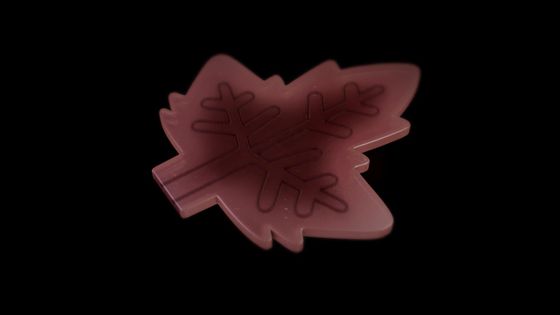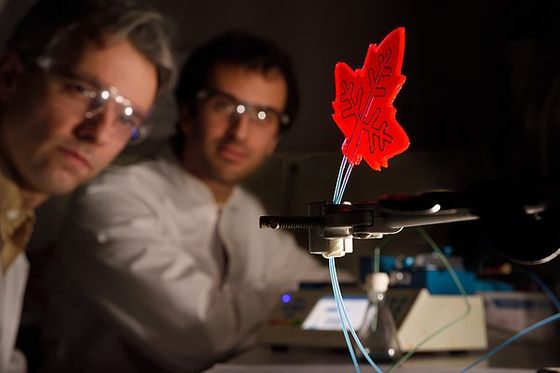`` Artificial leaves '' that synthesize pharmaceuticals only with sunlight will be developed

“Artificial leaves” have been developed that can synthesize drugs with sunlight, similar to the photosynthesis that leaves of plants do. Artificial leaves have already succeeded in synthesizing two kinds of medicines, and it is possible to create medicines anywhere as long as there is light.
Energy‐Efficient Solar Photochemistry with Luminescent Solar Concentrator Based Photomicroreactors-Cambié--Angewandte Chemie International Edition-Wiley Online Library
'Artificial leaf' produces medicine using sunlight for the first time
https://www.tue.nl/en/news/news-overview/artificial-leaf-produces-medicine-using-sunlight-for-the-first-time/
If you look at the following movie, you can see the explanation of how artificial leaves synthesize medicines.
Artificial leaf as mini-factory for medicine-YouTube
This is a newly developed artificial leaf.

The structure is simple. A thin tube that serves as a leaf vein passes through a resin made of

When a liquid, which is a raw material for chemicals, is poured into a tube and exposed to

As a result of the chemical reaction, the drug comes out from the other end of the tube that goes around the artificial leaf.

The artificial leaves were developed by a research group led by Timothy Noel of Eindhoven University of Technology in the Netherlands. Noel et al. Have already succeeded in synthesizing artemisinin , an antimalarial drug that is expected to be effective against multidrug-resistant P. falciparum malaria, and ascaridol, an anthelmintic drug that combats nematodes. .
Mr. Noel succeeded in developing an artificial leaf that creates chemicals in 2016, but silicone rubber was used for the artificial leaf made at this time. Although it is possible to synthesize drugs with silicone rubber, it has the disadvantage of low light refractive index.

Therefore, as a result of changing the resin part of the artificial leaf from silicone rubber to acrylic glass, the resin part became cheap and mass-produced, and the refractive index was improved, making it possible to synthesize the drug efficiently.
“The most important improvement is that acrylic glass can be loaded with various types of molecules that react to light. Thanks to this, visible light of all wavelengths is used to react chemically. ”And emphasized that improved artificial leaves can efficiently synthesize pharmaceuticals.
In addition, the function of automatically adjusting the flow rate of the drug according to the amount of light enables the drug to be synthesized without problems even if the amount of sunlight changes depending on the weather and time.
Medicines can be made as long as there is sunlight, so pharmaceuticals can be synthesized even in remote areas that are closed in dense forests.

Noel said, “Artificial leaves are not subject to restrictions other than the need for sunlight, and they are inexpensive, so it is easy to expand the scale. If we can partner with a pharmaceutical company, we can put it to practical use within a year.” He talked about how he could see the future where he could synthesize drugs with sunlight alone.
Related Posts:







